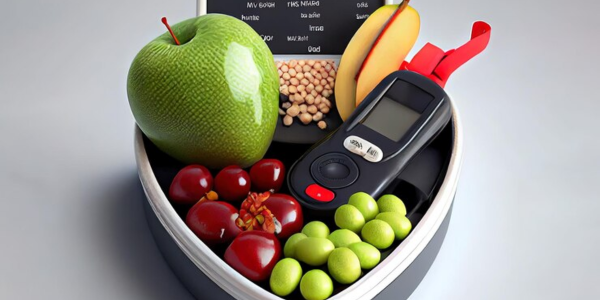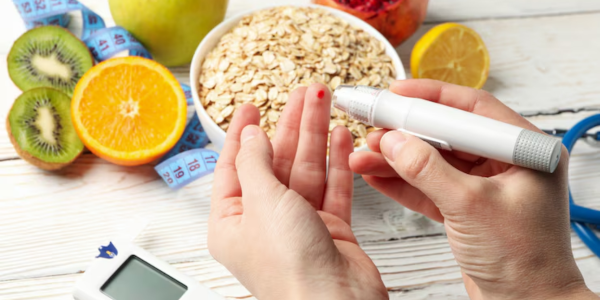7 High Glycemic Foods to Avoid with Diabetes
7 High Glycemic Foods to Avoid with Diabetes – and What to Eat Instead

When you’re living with diabetes, what you eat isn’t just about calories; it’s about how those foods impact your blood sugar.
One key concept to understand is the glycemic index (GI), a scale that ranks foods based on how quickly they raise your blood sugar after eating.
High glycemic foods spike your blood sugar fast and hard. That spike can leave you feeling drained, trigger inflammation, and over time, lead to complications like nerve damage, kidney issues, and cardiovascular problems.
If you’re managing diabetes type 1, type 2, or prediabetes, it’s crucial to know which foods hit hardest.
In this article, we’ll break down 7 high glycemic foods to avoid with diabetes, why they’re problematic, and healthier alternatives that won’t wreak havoc on your glucose levels.
What Is the Glycemic Index and Why Should Diabetics Care?
The glycemic index ranks carbohydrate-containing foods on a scale from 0 to 100:
- Low GI: 55 or less
- Medium GI: 56–69
- High GI: 70 or above
High GI foods cause a rapid increase in blood glucose. For someone with diabetes, these sharp spikes can lead to insulin resistance over time and make blood sugar management a constant roller coaster.
It’s not just about sugar. Many starchy and processed foods are high-GI even if they don’t taste sweet. Let’s get into the seven biggest offenders.
1. White Bread and Bagels
White bread and bagels are made from refined flour, which lacks fiber and nutrients. This composition leads to quick digestion and rapid increases in blood sugar levels. The GI of white bread is approximately 70, categorizing it as a high-GI food.
Alternative: Opt for whole-grain or sprouted-grain breads, which have a lower GI and provide more fiber, aiding in blood sugar control.
2. White Rice
White rice is a staple in many diets but has a high GI, often ranging between 64 and 93, depending on the variety. Its high carbohydrate content and low fiber make it a food that can cause significant blood sugar spikes.
Alternative: Choose brown rice, quinoa, or barley, which have lower GIs and higher fiber content, promoting more stable blood glucose levels.
3. Breakfast Cereals and Cereal Bars
Many breakfast cereals and cereal bars, especially those that are processed and sweetened, have high GIs. For example, corn flakes and puffed rice cereals can have GIs above 80.
These products often contain added sugars and lack fiber, leading to rapid digestion and blood sugar spikes.
Alternative: Opt for steel-cut oats or bran cereals with no added sugars, and add nuts or seeds to increase fiber and protein content.
4. Cakes, Cookies, and Sweet Treats
Baked goods like cakes and cookies are typically made with refined flour and sugars, resulting in high GIs. These treats can cause rapid increases in blood glucose levels and offer little nutritional value.
Alternative: Consider desserts made with whole grains and natural sweeteners in moderation, or enjoy fresh fruit to satisfy sweet cravings.
5. Potatoes and French Fries
Potatoes, especially when baked or mashed, have high GIs, often around 78 to 111, depending on the preparation. French fries, being fried and often salted, not only have a high GI but also add unhealthy fats and sodium to the diet.
Alternative: Choose sweet potatoes, which have a lower GI, or non-starchy vegetables like cauliflower or broccoli as side dishes.
6. Chips and Rice Crackers
Snack foods like potato chips and rice crackers are highly processed and often have high GIs. They are typically low in fiber and can lead to quick spikes in blood sugar.
Alternative: Snack on raw vegetables with hummus, a handful of nuts, or whole-grain crackers with cheese for better blood sugar control.
7. Certain Fruits: Watermelon and Pineapple
While fruits are generally healthy, some have higher GIs. Watermelon and pineapple, for instance, have GIs of 72 and 66 respectively, meaning they can raise blood sugar levels more quickly than other fruits.
Alternative: Opt for fruits with lower GIs, such as apples, pears, or berries, which provide fiber and essential nutrients without causing rapid blood sugar spikes.

Understanding the Glycemic Index
While avoiding high glycemic foods is important, it’s also essential to look at the bigger picture:
- Glycemic Load (GL) considers the portion size and gives a more accurate picture of how a food affects blood sugar.
- Food combinations can lower the glycemic impact. For instance, adding protein or fat (like eggs or avocado) to a high-GI food slows digestion and glucose absorption.
- Personal response varies. Monitoring your blood sugar after meals can help you identify how specific foods affect your body.
Tips for Managing Blood Sugar
- Read Labels: Check nutrition labels for added sugars and refined carbohydrates.
- Increase Fiber Intake: Foods high in fiber slow down digestion and glucose absorption.
- Balance Meals: Combine carbohydrates with proteins and healthy fats to moderate blood sugar spikes.
- Portion Control: Be mindful of portion sizes, even with healthier food choices.
- Regular Monitoring: Keep track of your blood sugar levels to understand how different foods affect you personally.
Conclusion
Managing diabetes isn’t just about avoiding sugar, it’s about understanding how different foods affect your blood sugar and making informed choices every day.
High glycemic foods like white bread, sugary cereals, and soft drinks can cause dangerous spikes that make diabetes harder to control and increase the risk of serious complications over time.
By cutting back on these seven high GI offenders and swapping in fiber-rich, whole food alternatives, you can take meaningful steps toward better glucose control, more stable energy levels, and a healthier future.
It’s not about restriction, it’s about smarter substitutions that support your long-term health.

.